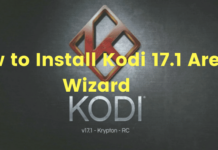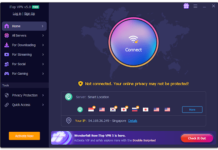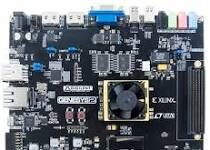With the whole world paying attention to the Bitcoin market, it’s understandable that a lot of people are looking for different ways to join the space. Combine that with the resurgence of personal computers (PCs) built for gaming, and we can see why users might be considering mining Bitcoin with their devices.
How it works
Let’s first talk about the concept of Bitcoin mining. Simplified, the way the blockchain works is by distributing the ledger publicly, allowing all interested users to take a look themselves and verify transactions. This is what makes Bitcoin so secure.
This ledger exists on the blockchain with each block pertaining to a specific set of transactions, 1 Megabyte (Mb) worth of them. For these blocks to be identifiable, they are labeled with a unique 64-character combination called a hash. The hash is what miners solve for, each miner competing to be the first one to arrive at the desired hash.
For a miner to achieve this, they need to make use of powerful computing hardware to come up with a solution. It’s not about how complex the mathematical formulas are—the problem is the fact that they will need to compute countless times in order to get the same or less than the target hash dictated by the blockchain.
What to keep in mind
Before talking about what you need to have to mine Bitcoin, let’s talk about a few things that you’ll have to take note of. We’ve focused on the main restrictions that the average person might have—take a look and keep these in mind.
Limited Bitcoin supply
Bitcoin is a digital currency and is limited to prevent it from inflating—but when will Bitcoin run out? Ultimately, the goal is to have 21,000,000 BTC circulating in the market, a figure that should be enough for everyone to benefit. As of writing (April 12, 2022), the current circulating supply is at 18,925,000 BTC.
To prevent miners from mining too fast, the developers running the blockchain halve the reward that Bitcoin miners get for every block they solve as well as the rate at which hardware can mine BTC. This halving occurs every time 210,000 BTC are mined and will continue until we reach the limit.
Bitcoin hash rate
When miners talk about their mining rigs, a metric they often use is the hash rate—but what are hash rates? This rate describes the speed at which your mining rig (or in this case your gaming PC) solves for hashes. This is usually measured in gigahashes per second (GH/s) or terahashes per second (TH/s). To put things into perspective, a gigahash is 1,000,000,000 (one billion) hashes per second.
Electricity expenses
Mining requires powerful hardware. For the hardware to work at its best, you’ll have to make sure it gets as much power as it can handle. For people interested in mining BTC with their gaming PCs, you can expect expenses to be much lower than a fully operational Bitcoin mining rig. That said, for your mining to be profitable, you’ll need to be mining enough to cover the cost of running your PC at peak performance.
Let’s not forget that as computer hardware consumes more power it will produce more heat. Too much heat and your hardware might start losing performance, in some cases it may even be damaged. For this reason, miners will make sure to add cooling solutions like fans or water coolers to maintain temperature, both of which consume power themselves.
Because of all this, full-time crypto miners try to establish their mining farms in areas where power costs are low. If you find that your area has low rates, you might be in a position to consider mining.
What you need
So we’ve talked about how mining works, what you need to consider, and what you can expect once you get started. Now, let’s talk about what you will need to convert your gaming PC into a personal mining rig.
Where in the past laptop hardware was enough, these days miners make use of high-end graphics processing units (GPUs) to do the math for them. Technically, any GPU can do the math involved in mining BTC, but differences will show when you consider the power you’ll be consuming as well the rate at which you mine.
Of course, what you get depends on your budget. To help narrow down your options, take a look at the hash rate of the NVIDIA 3060 Ti which mines at a hash rate of 60 megahashes per second (MH/s) or 60,000,000 hashes per second. It consumes 200W at this hash rate, necessitating ample cooling to maintain this rate. This GPU currently retails at $499.99 USD but could potentially go lower thanks to the fact that the shortage of microchips is seen to be ending.
To actually mine the BTC, you’re going to need a program catered to the task at hand. Fortunately, more than a few are free like Awesome Miner, Honey Miner, and Nicehash. At this point, what you choose will depend on your needs with each program offering its own set of advantages.
What other miners do to maximize their machines is join a mining pool. These mining pools combine the efforts of different miners to arrive at the same goal. Once awarded with BTC, the mining pool will then divide the BTC reward (based on their contribution) amongst themselves .
Bitcoin is for everyone
The point here is that there are different ways people can enter the market. Each approach has its own advantages and disadvantages. People who have the hardware handy can consider mining, while others who might not want to spend on computer parts might prefer to purchase Bitcoins for trading instead.
A change of strategy is always available as long as you take the time to research. In fact, with all the resources available, the only thing left for you to do to get started with Bitcoin is to take the first step.











![Extratorrents Is Down : Here Are The Best Alternatives To Extratorrent Top 14 ExtraTorrent Alternatives + 12 Mirror Sites [Updated 2020]](https://www.todaytechmedia.com/wp-content/uploads/2020/02/featured-100x70.jpg)